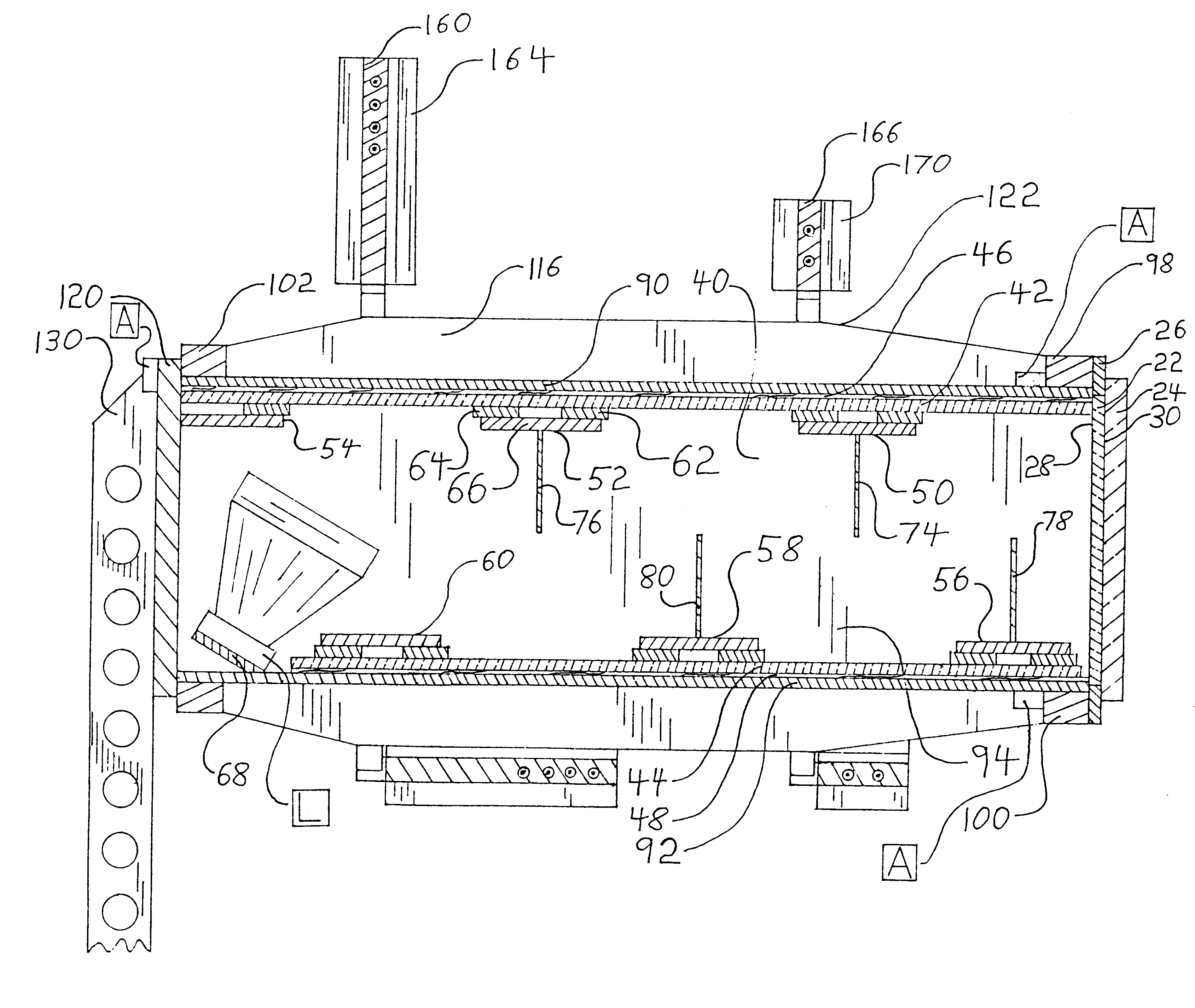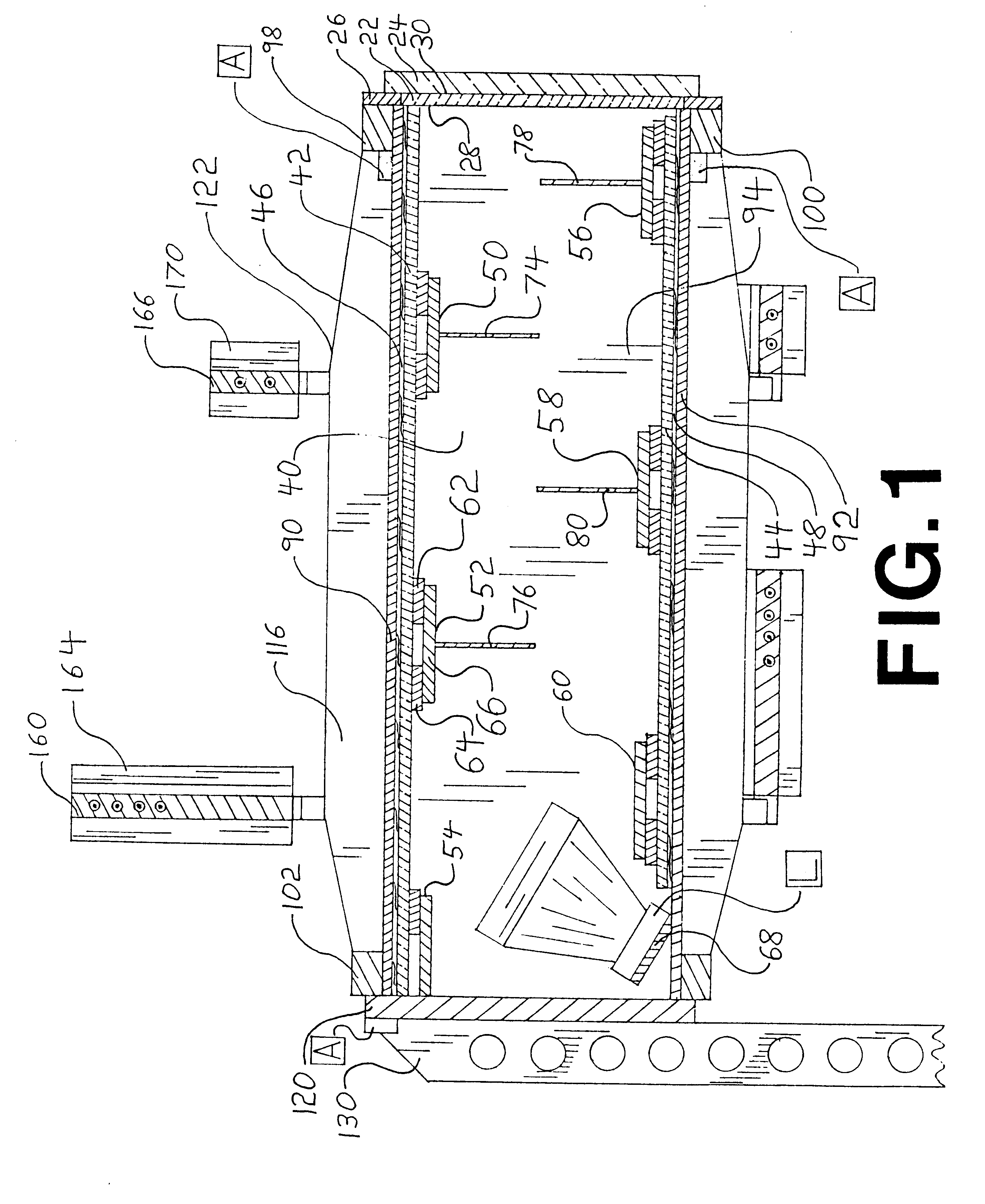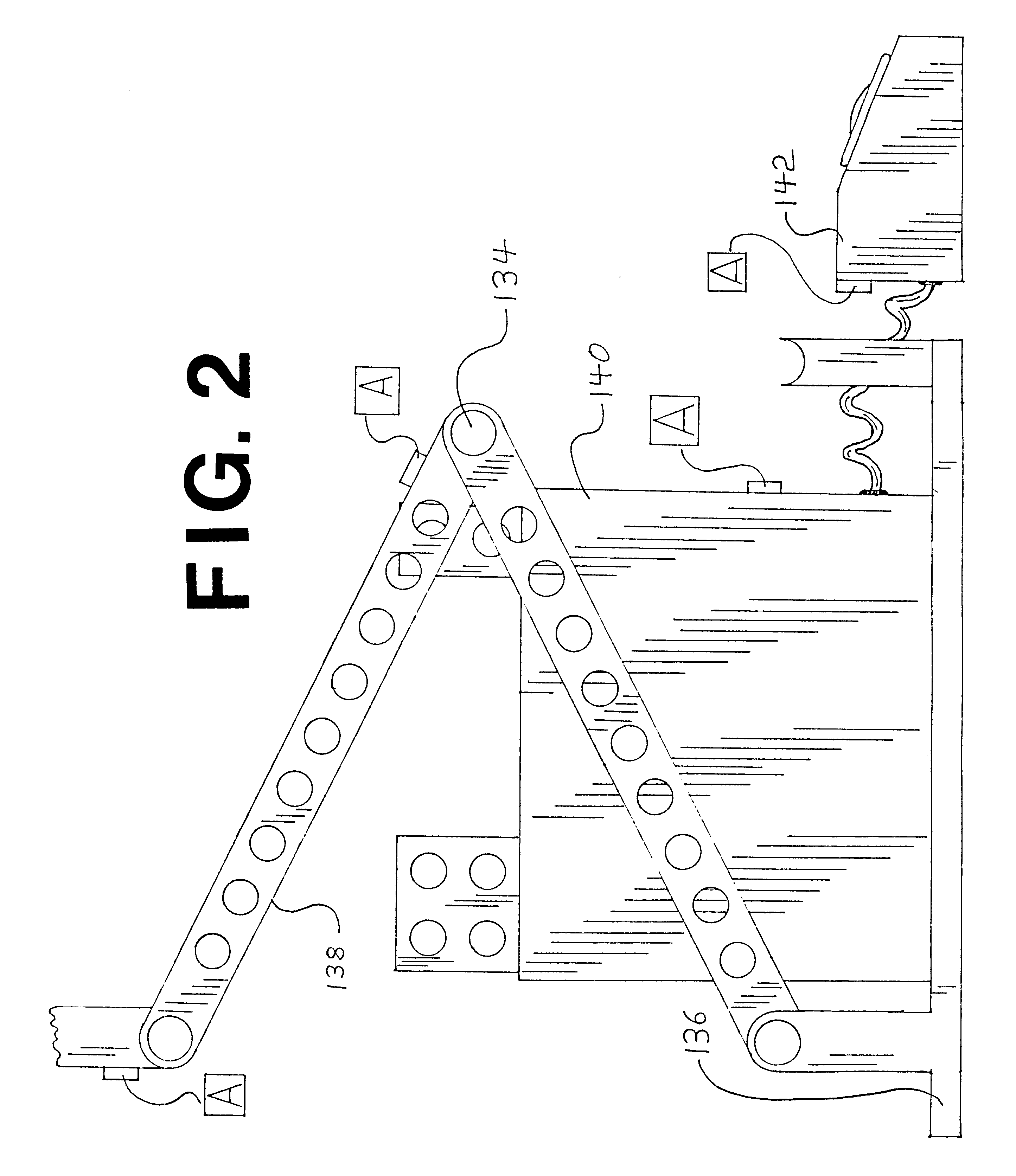Simulated weapon using holographic images
- Summary
- Abstract
- Description
- Claims
- Application Information
AI Technical Summary
Benefits of technology
Problems solved by technology
Method used
Image
Examples
Embodiment Construction
Referring to FIG. 1 and FIG. 2 it can be seen that structurally the invention consists of a body structure assembly 122 and a support structure assembly 138. Support structure assembly 138 supports body structure assembly 122 and controls the orientation of body structure assembly 122. Body structure assembly 122 positions most of the functional components of the invention and encloses many of those components.
A hologram 22 is held against longitudinal movement by a color filter 24 and the forward edges of body structure assembly 122. Hologram 22 is secured against transverse movement by a sash 26. Both color filter 24 and sash 26 are fastened to body structure assembly 122.
Hologram 22 at the margins of a first surface 28 impinges on the forward edges of body structure assembly 122. The remainder of the first surface 28 is adjacent to an interior chamber 40. Color filter 24 impinges on the entirety of a second surface 30 of hologram 22.
Interior chamber 40 is defined by a side panel ...
PUM
 Login to View More
Login to View More Abstract
Description
Claims
Application Information
 Login to View More
Login to View More - R&D
- Intellectual Property
- Life Sciences
- Materials
- Tech Scout
- Unparalleled Data Quality
- Higher Quality Content
- 60% Fewer Hallucinations
Browse by: Latest US Patents, China's latest patents, Technical Efficacy Thesaurus, Application Domain, Technology Topic, Popular Technical Reports.
© 2025 PatSnap. All rights reserved.Legal|Privacy policy|Modern Slavery Act Transparency Statement|Sitemap|About US| Contact US: help@patsnap.com



